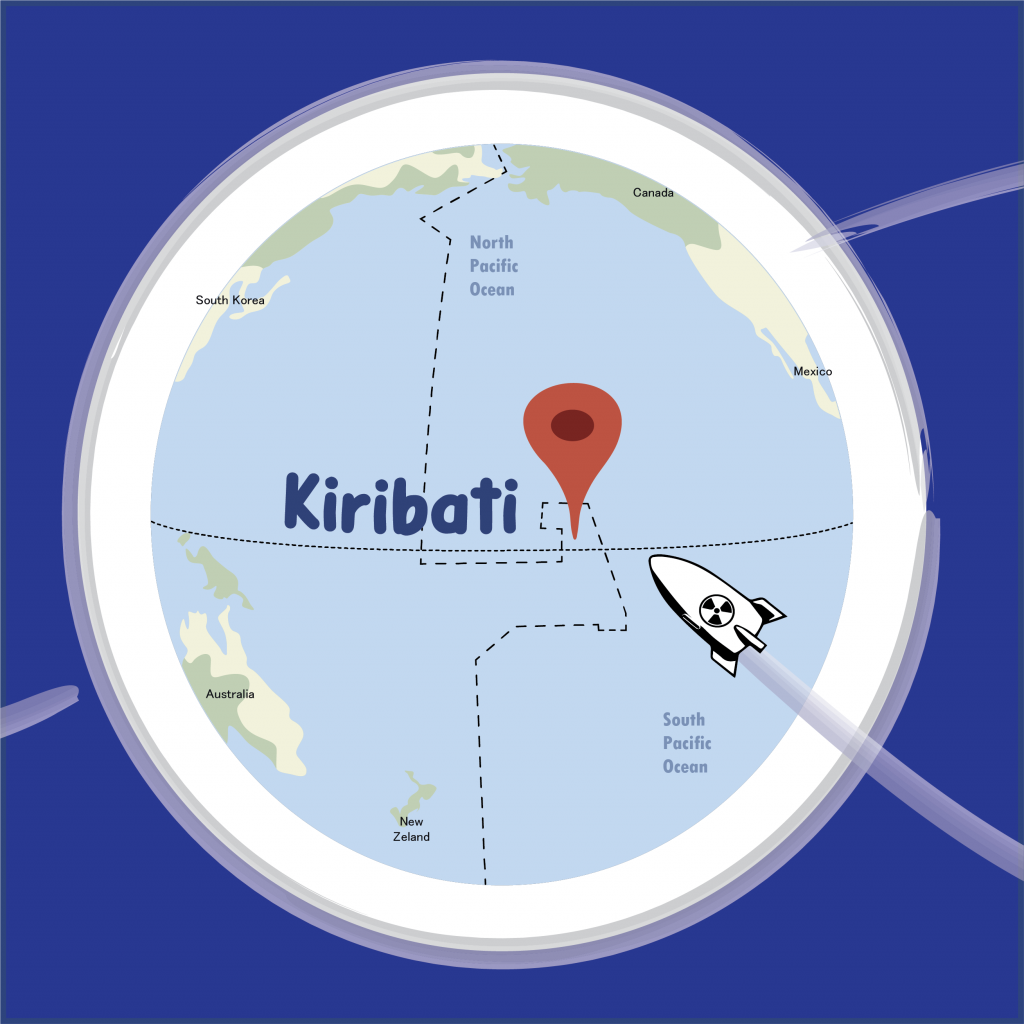The Republic of Kiribati is an island country in the South Pacific region. In Kiribati, there are thirty-two atolls—ring-shaped islands that include a coral rim that encircles a lagoon partially or completely. There is also a remote raised island known as Banaba. Only twenty of these islands are inhabited. Kiribati has a population of approximately 119,000 people, and the majority of them live in the capital, Tarawa. The largest island in Kiribati is Kirimati Island, also called Christmas Island. It is the largest island of purely coral formation in the world.
After World War II, Kiribati was used as a nuclear testing site by the British Military and United Military. British soldiers often referred to Kiribati as an “uninhabitable wilderness.” However, Kiribati’s indigenous people lived on the islands where the nuclear tests were conducted. Kiribati was a British colony at the time of the nuclear testing. Between 1957 and 1958, the British military tested nine nuclear weapons in Kiribati for Operation Grapple. In 1962, British and United States militaries worked together for Operation Dominic where thirty-one nuclear weapons were tested (Alexis-Martin, 2019).
When the nuclear tests were conducted, Kiribati Islanders were moved from their villages without their consent. In some cases, Kiribati Islanders were left in their homes without any protective gear and little to no information about the tests that were being conducted. After the tests were complete, the people of Kiribati were left without medical assistance and financial compensation for the loss of their homes, villages, and islands.

After the nuclear tests, a thousand Kiribati people were moved to Wagina Island in the Solomon Islands. The descendants of these Kiribati Islanders remain there today. Former permanent representative to the UN, Ambassador Makurita Baaro said, “Our communities still suffer from the long-term impacts of the tests, experiencing higher rates of cancer, particularly thyroid cancer, due to exposure to radiation.”
The aftermath of nuclear tests in Kiribati have not been studied extensively. However, the studies that were completed on the atoll described health problems from the exposure to radiation and multi-generational health problems faced by the descendants of the survivors.
Individual accounts of the nuclear tests reveal widespread sickness. Dr. Becky Alexis-Martin conducted research on the consequences of the nuclear tests in Kiribati and interviewed survivors and their families. One of those people is Philomena Lawrence, who is from Kirimati Island. Philomena was a child at the time of the nuclear tests, so she cannot remember the event. However, she can remember how it affected her immediate family (UNA-UK, 2022).
When the bombs were detonated, Philomena’s older sister, brother-in-law, and their baby were exposed to radiation. Philomena’s older sister, brother-in-law, and nephew have since passed away in their forties and fifties. Although the environmental damages caused by the nuclear tests have not been adequately studied, research has shown that the nuclear tests killed thousands of fish and birds (UNA-UK, 2022).
The nuclear legacy devastated Kiribati. Their government and people have not been properly compensated for the nuclear testing that took place. The consequences have included high rates of terminal cancers, displacement among the Kiribati people and permanent damage to their environment.
Read more science and environmental stewardship articles on our Zealousness blog Water Stewardship – iN Education Inc. (ineducationonline.org).
References
- Alexis-Martin, Becky. 2019. “The Atomic History of Kirmati.” The Conversation, https://theconversation.com/the-atomic-history-of-kiritimati-a-tiny-island-where-humanity-realised-its-most-lethal-potential-114870.
- UNA-UK. 2022. “New Report on Addressing British Nuclear Tests in Kiribati.” https://una.org.uk/news/new-report-addressing-british-nuclear-tests-kiribati.

















